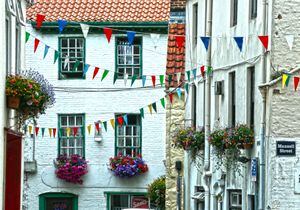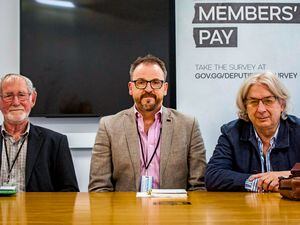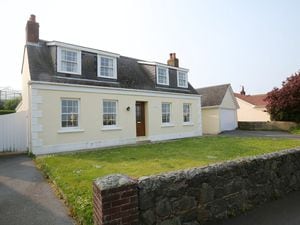Homes ‘could revitalise areas of Town’
DEVELOPING new homes in areas such as the Old Quarter of Town could help revitalise them, according to a senior politician.

Deputy Charles Parkinson said the area around Mill Street and Mansell Street could have a brighter future as more of a mixed-use district – including residential, retail and hospitality. Residential development was also an ‘obvious alternative use’ to some dated office space, said the deputy.
Last week, the Guernsey Press reported on new research that concluded there was an oversupply of poor quality secondary office space. With much of it vacant for several years, the report from D2 Real Estates suggested converting some of the ‘obsolete’ space to residential.
‘Clearly, there are a number of buildings around the Le Truchot area which were developed in the ‘70s and ‘80s, and which some of them are now not really up to specifications that are required in modern offices. On the Island Development Plan, that is a redevelopment area,’ said Deputy Parkinson.
‘I think with both some of the retail areas and some of the office areas, the obvious alternative use is residential.’
He added: ‘An area like Mill Street [and] Mansell Street where we see a lot of closed shops, I suspect doesn’t have a future as a retail district. I think what needs to happen in that area is, first of all, the parking issues need to be sorted out.
‘Secondly, the area needs to become more of a mixed-use area. So some retail but also residential, hospitality, etc. But that’s just a personal view. I’m not involved with planning.’
But such developments could give businesses a boost.
‘You have got people living there, then they are going to want to go out for coffees, they are going to want to go out shopping. So, it all becomes self-sustaining in a way that the district currently isn’t.’
The idea of converting obsolete office space into residential won support from Olly Brock, director of architecture at island firm bhp.
‘From an in-principle point of view it makes a lot of sense. Having more people living closer to the town centre creates a more vibrant and active public domain,’ he said.
It could also support shops, pubs and cafes and have a positive impact on traffic and encouraging people to walk.
Mr Brock added that were practical considerations to consider, including old construction methods and design in often legally protected buildings.
However, these issues and any reluctance to convert buildings could potentially could be overcome. For example, if the appearance of a building was important, the façade could be kept with construction of a modern residential space behind it.
‘With many of the existing buildings protected, it is perceived to [be] very difficult to make changes that are required. The protected status of the building is assumed to be a block when it needn’t be, depending on what is important about the building,’ said Mr Brock.
‘It would be fantastic if we could get some traction behind this because it has the potential to transform St Peter Port and St Sampson’s.’





